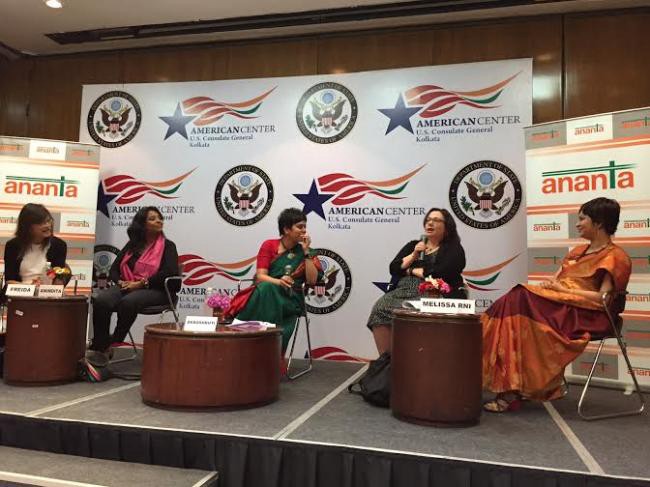It is a very exciting time to be in India. The country is having a national conversation about gendered violence. There are not only the very heated debates about “India’s Daughter,” but new reminders of the urgency of this issue. Just this past weekend, a 72-year-old nun was gang-raped during a robbery at her convent.
As I mentioned in an earlier post, I am in India with the American Film Showcase, which is a partnership between the State Department and USC’s School of Cinematic Studies. My travel and speaking partner is Academy Award-winning director Freida Mock. She is screening her film “Anita,” and I have been giving a presentation called “The Status of Women in Hollywood.”
A great part of the trip is that we get to spend a lot of time talking to students. I have found them so inspirational. Our first stop was Jadavpur University, where we partook in a day-long conversation called “Media Portrayal of Women: Are They Stereotyped.” Amazingly, the first panel dealing with women and gender stereotypes was populated only by men. But optics matter.
India has a vibrant film industry in Bollywood and Tollywood (based in Kolkata). Students interested in film study mass communications. (My understanding is that very few schools offer a film major at the undergraduate level.) One of the biggest issues for these budding cinephiles is the age disparity between the male and female stars. The men are older, the women younger. The students all know this is a joke, and they seek to challenge these images in their film and advertising industries.
These young women are being educated and fighting against restrictions placed upon them by their society and families. They ask questions like, How can I convince my father that it is okay for me to go to a protest? How can I speak up when people are not listening to me? I was thrown. How do I answer these questions? But I quickly realized that I don’t have to have answers — I just need to listen. And that’s what I am doing: listening and learning.
In two days we’ve been to 3 colleges: Jadavpur, Shri Shikshayatan (a women’s college), and St. Xavier’s. Hollywood movies are a great way to connect with them and to talk about gender. They’ve all seen the big movies, like “Gone Girl” — and one guy could not stop talking about “Cake” — and they know there is a huge gender disparity. It is wonderful to watch them see the statistics of what is going on with women in Hollywood and how it connects with their lives.
The big program yesterday in Kolkata was a celebration of International Women’s Day and Women’s History Month called “Our Voices, Our Journey.” This year, the focus of the discussion was women in film. Prior to the panel, there was a press conference where we were innundated with questions about “India’s Daughter.” Personally, I could never be a diplomat. They have to be so, well, diplomatic. They can’t say that banning the film “India’s Daughter” is a problem, but I can, and did.
I found the panel to be amazing. I was the only white girl — what an important change. I was in awe of the women who use the word “patriarchy” as part of their everyday discussions. They were so radical! The panelists included Churni Ganguly, an actor and director. She is very famous and has made a career based on playing strong women. There was also the super-smart moderator Deboshruti Roychowdhury, the Dean of Students at Presidency University, and Anindita Sarbadhichari, a TV and film director who is clearly a leader pushing the envelope for women in the industry in India.
I am a lucky woman to be able to have this experience. More to come. We are now in Pune for a day of activities and will soon be in Mumbai.







